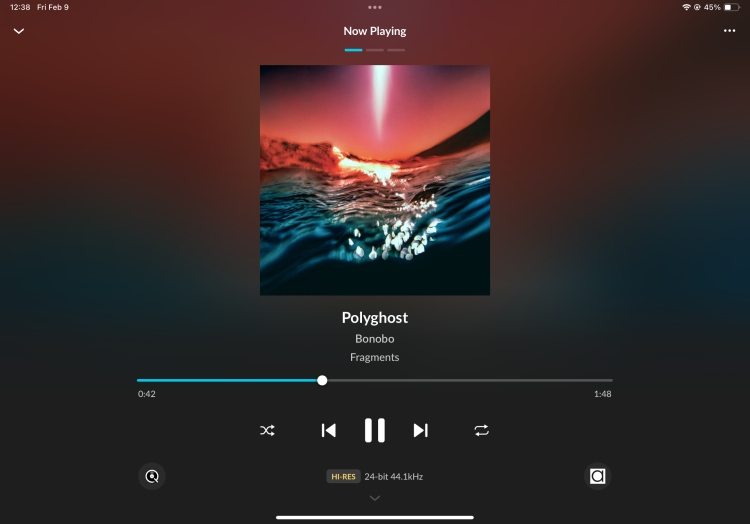
As I tapped away in the app, I found more and more enrichment “goodies” some of which may seem self-evident but are unavailable in most other apps.
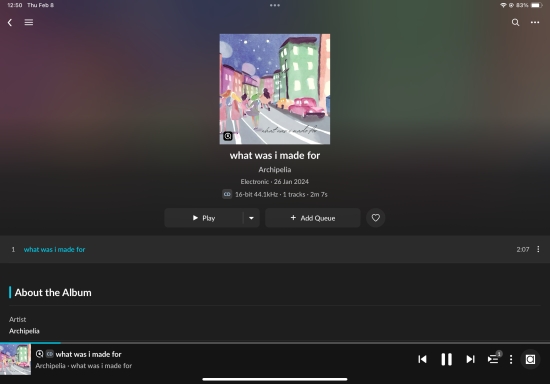
For instance, the app has seamless integration of multiple local libraries and online services and allows the user to combine or filter between the various sources.
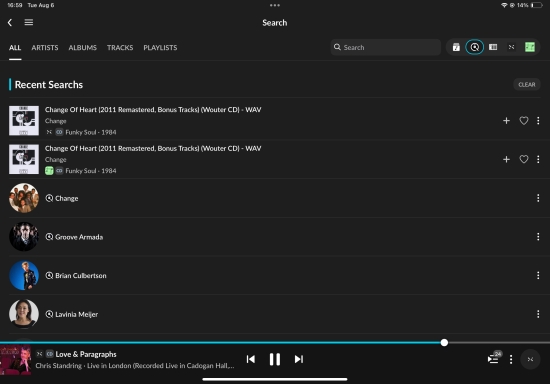
The app automatically finds more albums by the same artist and displays them with a lot of extra information.
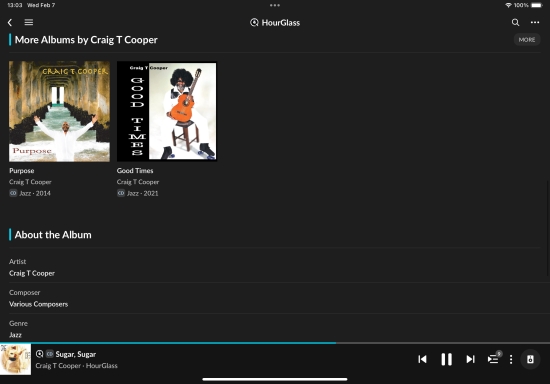
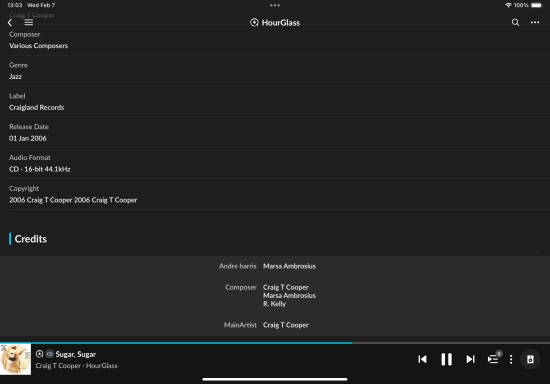
If you then tap the “more” button, you will also see albums related to this artist.
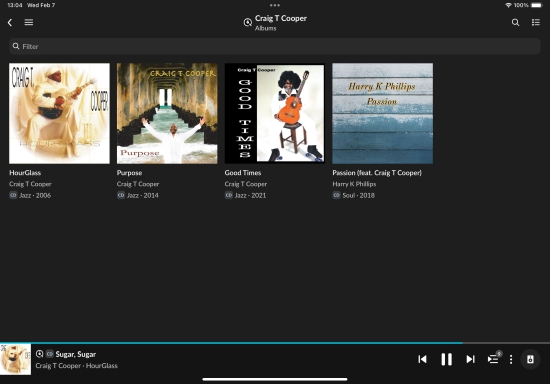
The app even shows versions of the album, such as the Qobuz version of an album that I have stored locally, as well as suggestions for other artists I might like.
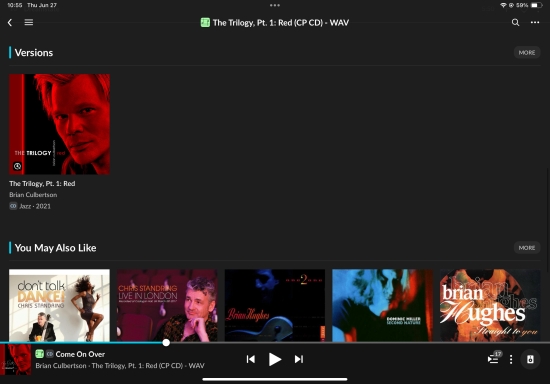
In all the instances where the 3-dot button is displayed, you can request more info about the artist, track, or album.
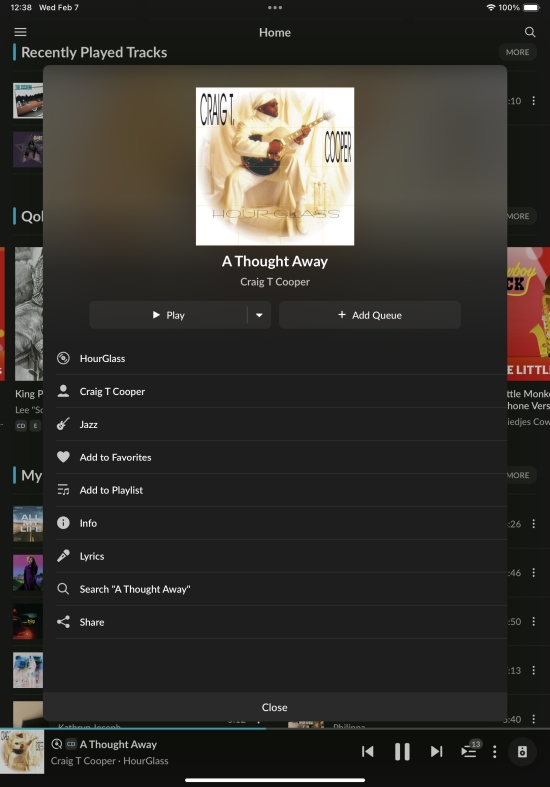
Something that is definitely not widely available is that when searching by Artist, the app offers Roon-like background information about the selected artist.
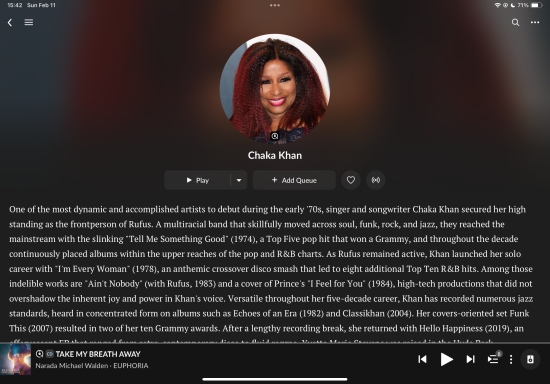
Another rare feature is the possibility to add tracks to playlists no matter where you access them, be it on the associated album, in the Queue, or in another playlist.
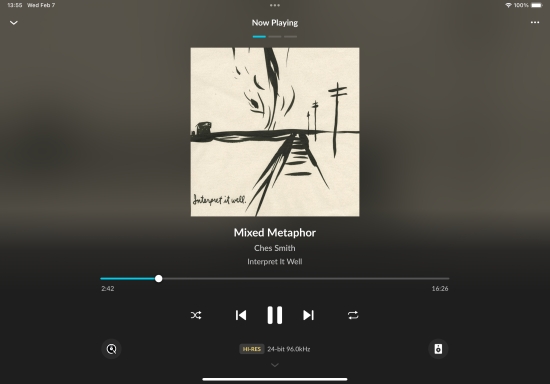
Above is the Now Playing screen. The 3 bars above the album cover indicate you can swipe right to access two more associated screens. The next screen is the Queue. You can preset the default cueing behavior: either play all tracks now or Add all tracks to the end of the play queue.
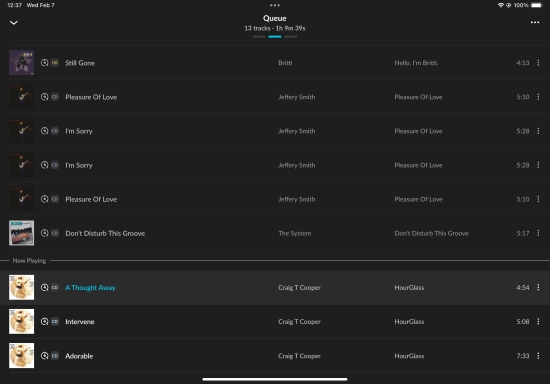
There is a clear distinction in the queue between what’s coming up and what’s already played. And as soon as you’ve scrolled past the “now playing” point, a button appears that brings you right back to the current track.
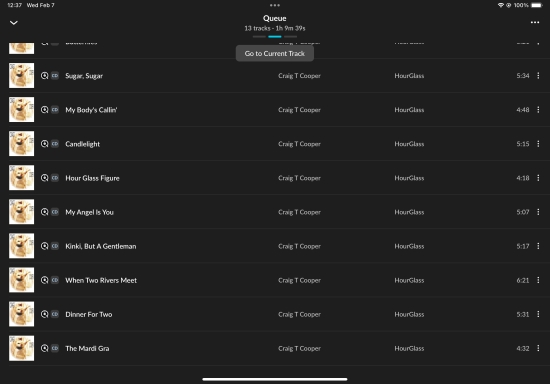
The third screen offers access to the app’s Radio function. Originally introduced by Roon, this is another feature that you will not find in other UPnP apps. This super-handy function auto-selects and plays music at the end of the now-playing queue based on music played earlier, as well as direct user feedback. You can teach the algorithm by thumbing up or down.
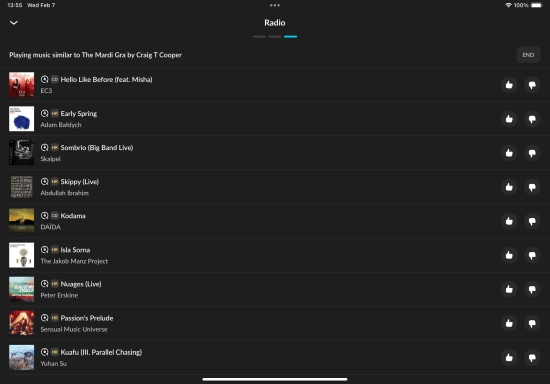
The app even has Roon-like functionality such as Focus, which lets you quickly and easily narrow down the results.
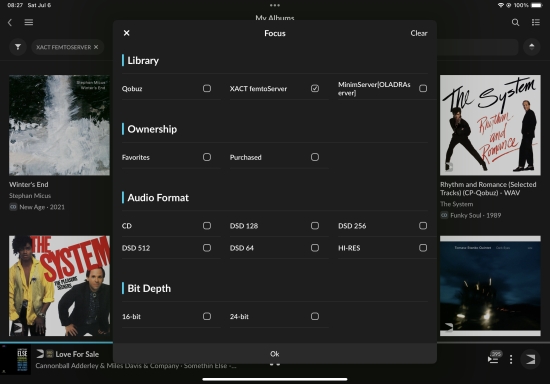
I find this particularly useful when I want to distinguish between Qobuz and local files, search only on a particular server, or show only certain formats, bit depths, or sample rates. Additionally, Focus lets you sort by ownership (local/cloud), decade, genre, artist, or composer.
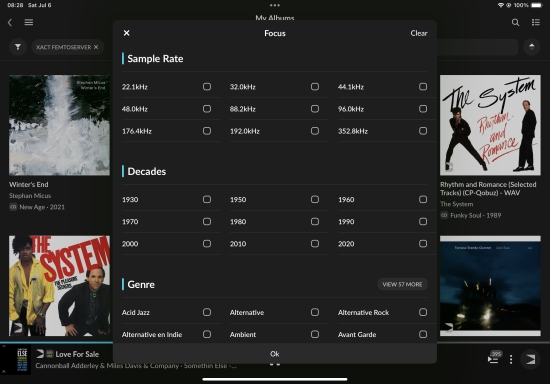
Continued playback in Lock Mode
Although UPnP requires the control point to continuously queue the next track in the queue, JPLAY keeps the music playing even when the tablet is locked (sleeping, with the screen off), and when the queue is finished, the Radio function will take over. It works with both of my streaming endpoints, as well as the iPad itself. However, if the JPLAY app is closed, or the iPad is powered down entirely, the music will stop after the currently playing track. While this may seem restrictive compared to Roon, I have not noticed an increase in battery consumption during my weeks of use. As such, I don’t see a use case for closing an app that is frequently used or shutting down the iPad during music listening.
Lastly, we should probably also credit Apple for this, but even the lock screen looks pretty, and as you would expect, the controls work flawlessly.
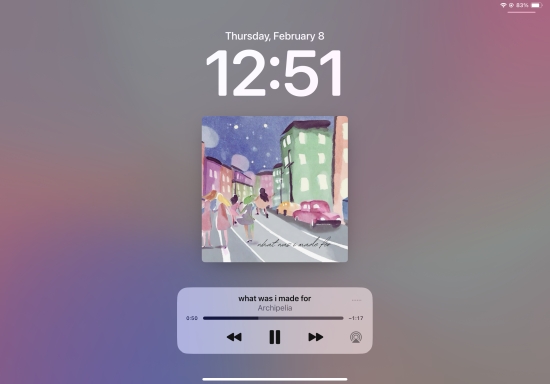
Next: Review Context and Listening
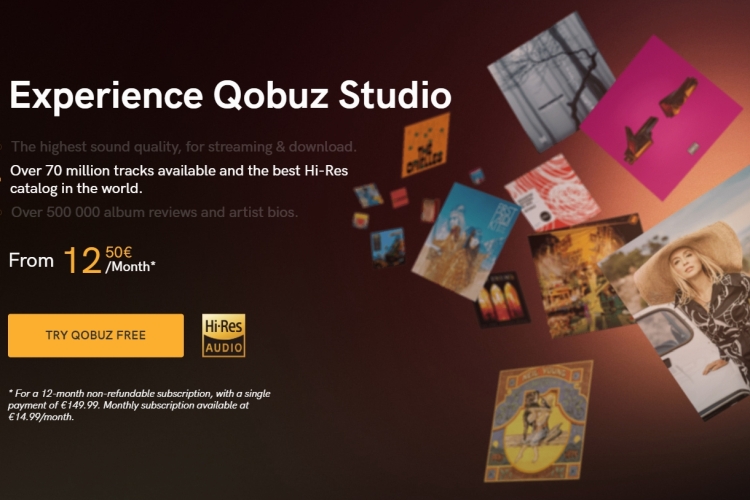
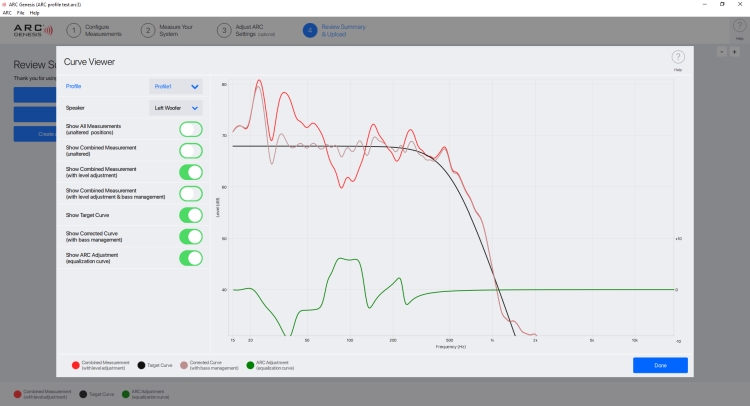
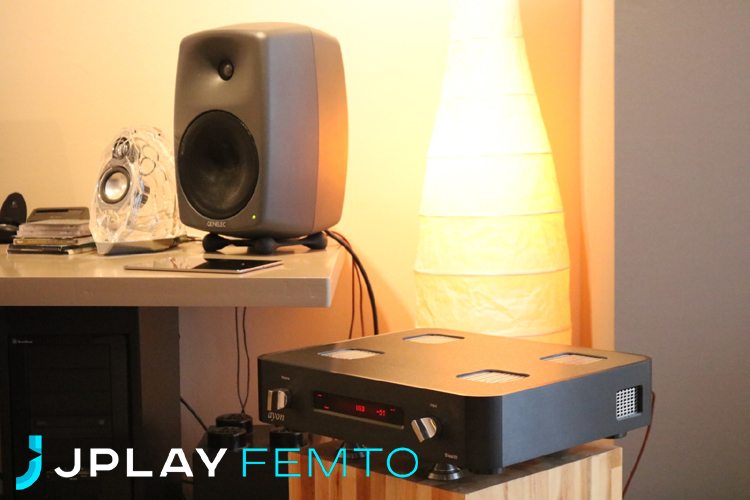
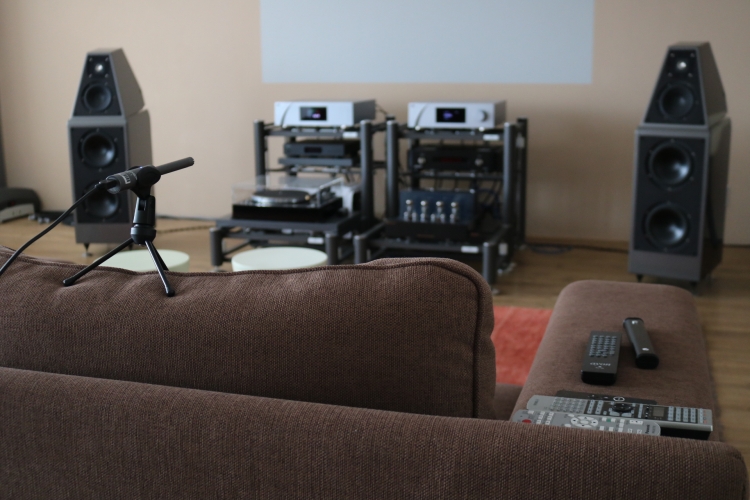
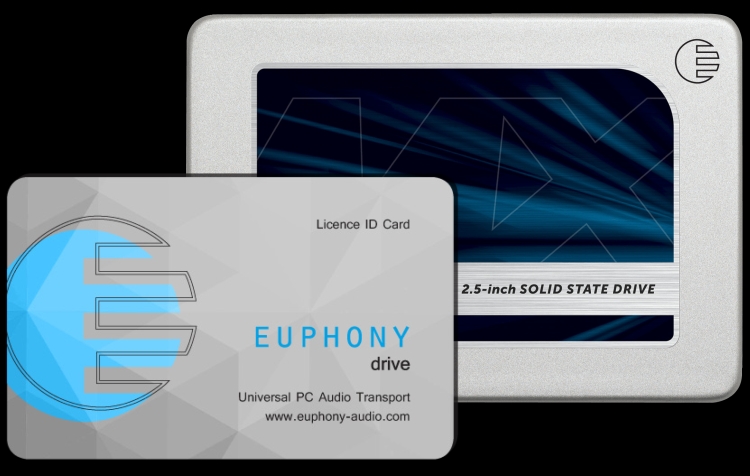
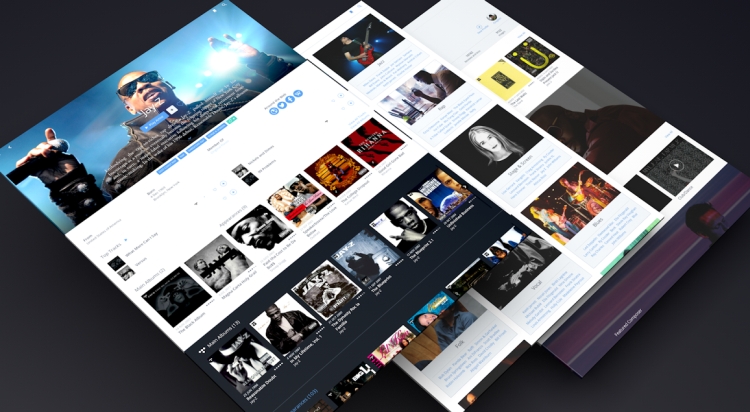
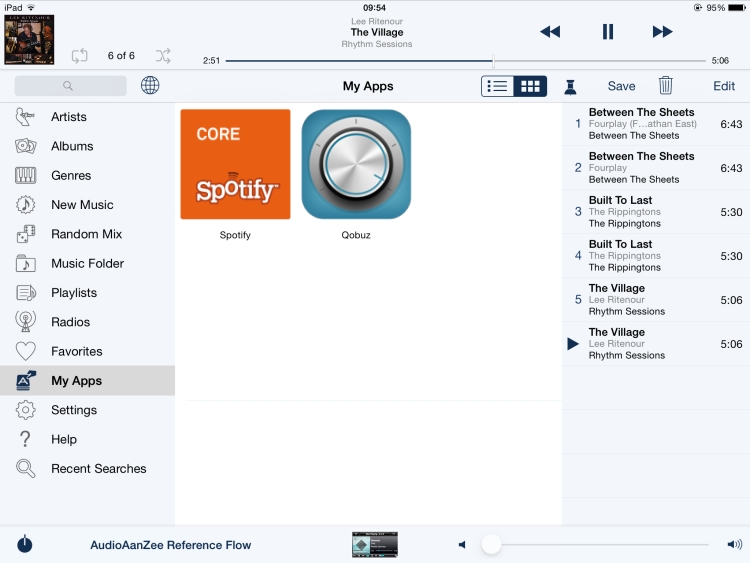
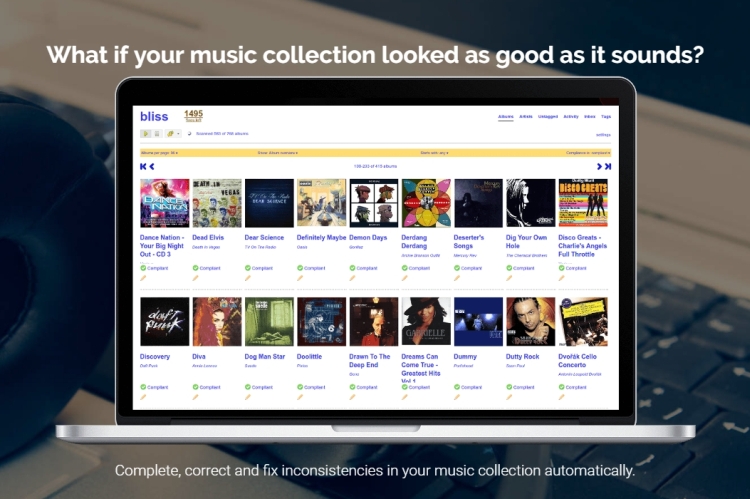
Hi Christiaan,
great review, I appreciate the comparisons.
As you like JPLAY for iOS it would be interesting to know how XACT S1 server with Formula DAC compares to Linq/Formula and CH Precision.
Matt
Hi Matt, that would indeed be interesting to find out! 🙂 There’s a chance I may indeed also review the JPLAY XACT server, but no definitive planning just yet. If/when I do, I will make sure to make those comparisons.
Is it possible to listen to radio stations via Upnp through JPLAY app?
JPLAY for iOS has “radio” as in the automatic queue and shuffle function but it does not currently have internet radio stations like TuneIn and such.
Christiaan,
also for your upcomig Antipodes K22 review some comparisons vs Aqua LinQ would be very nice as both endpoints are roughly in the same price range.
The K22 review is now ready and will be online soon. I’ve not made comparisons with the LinQ as I don’t feel they are the same kind of device. (Pure streaming endpoints). The K22 can perform that function but is also a complete all-in-one server while the LinQ can only be an endpoint. If the LinQ also had a server component, I would naturally have compared them. Nevertheless, I’d be happy to comment on how they compare in the comments after the review is online.
From what I understand the moment I switch off my iPad the music stops.
No matter what I was playing, internet radio, qobuz or local storage on my server.
I that correct ?
That would be a deal braker for me; I had this in the past with the MConnect app and definitely don’t want that again.
When I start playing music, e.g. a ripped cd on my server, I switch off my iPad and switch it on an hour or so later (the moment the music stops).
No problem with the app I’m currently using.
If you switch the iPad completely off (powered down, requiring a reboot) then it cannot send URLs to JPLAY. In that case, the current track will continue to the end but after that, playback stops. If you leave your iPad on (display active or showing lockscreen), so not fully powered down, then the music continues the same was as when leaving it fully on.
Using a Holo Red with HQPlayerEmbedded I wanted to use Jplay. I select the HQPlayerEmbedded as renderer and connect Qobuz but when trying to play a song I get this error message: error sending action to renderer
How to fix this?
Hi Marc, do you only get this error message when you play a song via Qobuz? What happens when playing e.g. local media? Alternatively you could flash a micro SD Card with HQPayer NAA and see if this works ok. You’ll need hqplayer5desktop_5.4.2-12_arm64 download (Red uses a Pi4 Compute module)
In my opinion (during my listening tests) Jplay IS [now] the only [graphic and UI] Roon competitor, a part the InnuOS sense and maybe BluOS.
Fast, beautiful windows and intuitive… Ah, OK: you wrote this! (:-)
Talking about SQ, and specially vs mconnect (old school and almost obsolete today) I found exactly the opposite meaning that you found: mconnect is more neutral, and leaves the “work” to the DAC while Jplay sounds to me like Roon and therefore “softer”.
(Roon is even more so!)
Not having (yet) the TuneIn / Vtuner radio service (flac!) Jplay is not good and especially if you have to pay for the APP.
At this point, innuOS sense is #1, but only works on InnuOS.
I will wait for new releases :))
P.S. Strange that Jplay it continues to play until the end of the song if you close the APP: so does it buffer? But does it have anything to do with the “less data” for the streamer?
No, I saying this because mconnect instantly ends the music (so less data = 0 buffering?) by closing the APP.
Hi Luca, how interesting that your observations are the opposite of mine comparing MConnect to JPLAY. There must be another variable to take into account but because I heard the same differences with the Aqua LinQ as the CH C1.2, I wonder what it might be. Regarding playing the current track until the end even with the control point switched off, as I understand it, JPLAY sends the URL of a track to the Renderer which simply takes it from there, continuing the data connection with the streaming service host for that track. Only a small portion of the track is buffered while new data is transmitted more or less continuously. Without a new URL sent for the next track to play, playback stops after the current track.
Just out of curiosity I tried JPLAY for a few days and then had enough of it.
I want an app where the music continues to play when I switch off my iPad.
Not just one song, but the whole album.
The app I’m currently using works exactly like that. (hurrah).
JPLAY, like mConnect, sadly not.
That’s already a deal breaker for me. Plus several error messages that JPLAY could not detect my local server, despite the fact it was switched on and wired connected to the internet.
So I’ll stick to my dCS app.
Hi John, sorry for a very belated response. I find that the playback with JPLAY continues as long as the app remains active in the background, also with the iPad in lock/sleep with the screen off. I’ve listened to countless albums and assembled playlists of local and Qobuz material unattended, and playback has never stopped. Only when I close the app, playback does stop. I wonder what the delta is between your situation and mine.
Regarding the “server unavailable” error message you mentioned, I have also seen that and this can happen when you’re mixing and swapping between multiple servers and control apps. As long as I use the one app with the one server, operation has been rock-solid. When this message appears, even though the server is visible in the JPLAY app settings, it indicates the connection was lost (for instance after a power cycle). All that needs doing is to tap “Search Devices” to let the app re-establish the connection. After that, the content will play again.
AFAIK, dCS Mosaic also works via UPnP, so I wonder how it differs from JPLAY in terms of continued playback.
Hi Christiaan, thanks for your response.
In another response (not to me) you wrote :
“If you switch the iPad completely off (powered down, requiring a reboot) then it cannot send URLs to JPLAY.
In that case, the current track will continue to the end but after that, playback stops”.
That’s exactly my problem I was trying to explain to you, apparently not clear enough.
My dCS Mosaic app does not have that problem (flaw ?).
e.g. I can start a 2 hour playlist and from the moment the music starts playing I can switch the iPad completely off, the music keeps playing until the end of the playlist, some 2 hours later.
Saves a lot of battery charging.
Hi John, sorry for the late response. Your reply was in spam and I only found it now. Ok, in that case, it seems that dCS uses OpenHome rather than UPnP. In day to day use, I don’t notice the functionality eating into the battery, even if you can look it up in the tablet settings. I do notice it when I have music playing 24/7, for instance, to run in a product or cable. But even then, the tablet still lasts several days on a single charge.
Thanks for such a full presentation of an important option to Roon. As usual, your site does us all a valuable service.
A quick question: I’ll be visiting Amsterdam this Spring and, apart from the links on your site, are there high end dealers you can recommend?
Alas, we don’t have many true high-end dealers left. A10Audio is the only one that springs to mind to offer truly esoteric equipment. We do have HiFi Solutions, iEar, and HiFi Klubben. But most of the ones that offer the top-shelf items are outside of Amsterdam.
Many thanks Christiaan – as it is there it is here. Sad to say. Truly appreciate your quick reply and help. You do us all a real service and it’s much appreciated.
Hi Christiaan, thanks for the interesting review. As an Antipodes User (K22+K41 G4’s) I am becoming more and more aware that Roon with Roon endpoint is not the best sounding option. Using Squeeze with LMS is so much more engaging although Roon is really smooth as you said. Squeeze material skin is nice but on the player side (Web UI or iPeng) I do find it limited and reverted to Roon Server with Squeeze endpoint, which was a bit best of both worlds. And now I tried JPlay and I noticed directly the clarity and crispness and a much better UI then iPeng (and Material). A big advantage over Roon remote on the iPhone by the way is that you can see and manage the songs from the Home Screen (Roon= Unlock first). So I am considering switching to Jplay, MPD, MinimServer on the Antipodes. Would you think it will decrease sound a lot if I keep Roon server running (I use Roon Arc a lot in the car)?
Hi Richard, Antipodes has always advised to enable only the apps you need for best SQ and I agree this is best practice. Roon Server has an effect on the sound when running and connected to the network. But it’s much less evident than when actually using Roon for playback. So, don’t worry about it if you’re happy now using Squeeze as your main app and running Roon simultaneously.
Hi Christiaan, thanks. My choice will be between Roon with Squeeze endpoint and MPD/Minimserver/JPlay then.
Hallo Christiaan,
Ik luister TIDAL Max via NuPrime Omnia 300 en nu met JPlay op mijn IPad3(laatste softwareversie). Het verschil is duidelijk positief waarneembaar dat mij bijna deed besluiten om de app te kopen was het niet dat ik regelmatig een errormessage kreeg, Failed to load data from renderer- (NuPrime). Alle opties die mogelijk zijn heb ik doorlopen tot zelfs het opnieuw installeren van de app. Ik heb nog geen nieuws van NuPrime of JPlay gekregen op mijn probleem.
Heb jij misschien nog ideeën wat ik zou kunnen checken?
Hi Jan, I have never come across that error and suspect it may be something in your network. Does the app stream ok to other endpoints in the same network? Do other UPnP apps work or do they have the same problem? To double-check it’s not the server/NAS or app, you can select the iPad itself as the endpoint and see if that works.
Hi, has anyone compare Rigelian to J-play and mconnect ? Love to see more sound quality evaluations.
I have MconnectHD and JPLAY. JPLAY is way, way better than Mconnect.
Bonjour Christian et merci pour tout ces essais, je suis possesseur d’un Melco N1zh que j’utilisais jusqu’à maintenant avec l’application Linn sur un ipad et grâce à votre analyse je passe sans hésiter à Jplay,après la validation d’une une écoute comparative entre les deux la jplay c’est avérer plus organique et une véracité sur les timbres légèrement meilleure.
Merci et bravo à vous !
Hello Christiaan, wil this also work on a Sonus Faber Omnia streamer?
The Omnia is compatible with AirPlay, Chromecast, Spotify, Tidal, Roon, and Bluetooth. No UPnP, I’m afraid.
Ok, Thanks for the advice.
regards Albert
Hello, do you mind clarifying which LinQ module provided the best sound using JPlay? I am not quite sure is the HQPlaywr Core + NAA or the UPnP DLNA was the best.
I’ve only used NAA with Roon, which affects the performance. So, I do not have experience with NAA native. So far, though, UPnP always sounds purest and least editorialized to me.
Hello Christiaan! Have you ever compared or listened to Audivana versus JPlay? I strongly prefer the sound of Audivāna to McontrolHD but the Audivana interface is a pain to work with, often being unstable for me. I agree with your assessment of McontrolHD but it does work well for me. I use the Playback Designs MPD-8 and MPT-8 with x2 streamer.
Hi Ivan, alas, I have not yet assessed Audirvāna’s sound quality.
ivan what software did you ultimately go with? i’ve the MPD-8 and MPS-X and cannot stand the drop outs in Mconnect, and it sounds lousy too.
A little late to the party….
Tempted by the promise of “better sound” I bought JPLAY.some months ago. It turned out to be a bad buy for me, alas.
It does not co-operate at all with my Aavik streamer.(not finding several artists in my local library, skip songs during play, stop halfway a playlist…, to name only a few problems)
So for me it’s 52 euro’s down the drain.
Back to my AGD (Audio Group Denmark) app. Works flawlessly.